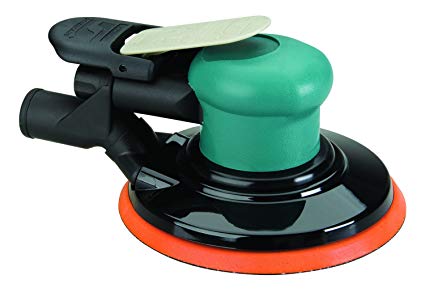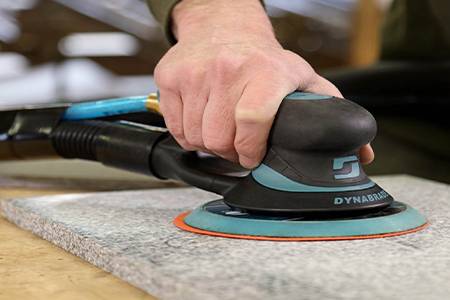El lijado de superficies planas barnizadas es una operación habitual en la industria de la madera, los tableros y la...
}The use of hand or portable sanders has been essential for many industrial
sectors for years. However, in recent times its domestic use has been gaining
increasing presence. Discover the multiple uses that can be given to these
versatile devices.
Uses of hand sanders
There are many clear examples of the importance of sanding in different
sectors:
Automotive: In this sector sanders are needed to repair the defects
that occur in the painting of vehicles.the nautical and aeronautical industry: sanders help to
manufacture and repair hulls and outdoor structuresIn the metal sector: they are used to eliminate the discolorations that
appear, the weld seams and give the surface the desired level of finish,
be it vibrated, nuanced, polished, mirror shine or othersSmoothing cement floors is another of the most common
applications of hand sanding, which become an essential tool for the
construction sector in all its aspects.When it comes to wood and its derivatives, sanders are used to make
surfaces free of fibers and to make their feel pleasant, in addition to
preparing surfaces and then varnishing them.
Sanding, in this last step, is essential to give uniformity to the
varnished surfaces and achieve anchor points that ensure the
adhesion of the finish, as well as for polishing and high gloss finishes.In the composites sector, sanders allow to obtain finished surfaces,smooth and free of any defects.
The hand sanders are used in very different sectors to give uniformity
to the surfaces and achieve impeccable finishes
Materials to perform sanding by hand
Hand sanders are used to obtain excellent results in:
Metals, be it aluminum, steel, stainless steel or, also, non-ferrous metals.
Wood (solid wood, veneered boards, fiber boards, solid surface and resins), as well as
with varnishes (water, polyurethane, polyesters, ultraviolet and nitrocellulosic
varnishes)Construction, specifically with the smoothed microcement and concrete, as well as in
paint and decoration to eliminate gotelé from ceilings and walls.Carbon fiber and fiberglass composites, which are increasingly used more frequently.
Its use, however, does not reach sectors such as footwear, glass and stone.
Why you should use a hand sander
The use of hand sanders is increasingly widespread, since with these devices you can perform all the operations required for very different materials, from deburring and roughing to vibrating, matting or mirror shine on metals; as well as rough, intermediate and finishing sanding on other types of materials such as wood, composites, etc.
On the other hand, they are valid for sanding edges, edges, planes and curved surfaces, both horizontally and vertically. Among its advantages, the following stand out:
It is possible to use them to treat pieces or sets of pieces with different volume and shapes
Works can be transported and carried out in the agreed place
They are versatile tools, which can be used to treat different types of material. For
this, it is only necessary to change the abrasive and adjust the working speed with theregulator they have.
Portable sanders can treat different types of material only by changing the abrasive andadjusting the working speed
Types of portable sanders and their accessories
When buying a hand sander it is necessary to ask what is the use we are going to make of it:
What surface do we need to sand by hand?
Are we going to use it in a rather small or large space?
Do we give importance to the sander can use many accessories?
The answer to these questions, as well as the budget we manage to spend on this device, will help us to choose correctly a tool that, with proper maintenance, can offer us a good service for many years. To make it easier to select one type of portable tool for sanding or another,here are the types of portable sanders and their accessories:
Finger sander with mini-bands
With small dimensions and low weight, it has a thin and elongated sanding surface, which makes it especially useful for sanding hard-to-reach areas, as well as small corners and corners. Its most common accessories are fixed and extensible arms of different lengths and withdifferent diameters of contact wheels.

Straight hand sander for abrasive sleeves
It is especially recommended for sanding universal plastic and metal surfaces. You can have different carrier and couplings.

Straight sander for brushes and/or abrasive wheels
In it you can add different brush strips or carrier.
Straight sander for abrasive stars Suitable for wood and varnishing, the abrasive stars with two faces and four divisions used are usually made of aluminum oxide ore.
Belt sander
It is used for sanding different materials, although its most common use is usually with wood.
An electric motor causes two drums that have the sandpaper band mounted at high speed.

Roto-orbital sander
It is a type of sander that facilitates the obtaining of almost perfect sanding thanks to its ease of use and the quality of the work performed. The abrasive discs are fixed to the sander plate by means of a velcro system for quick change. We must consider different diameters,thicknesses and densities of plates, as well as plate protectors, converters and interfaces.

Orbital sander
It comes in different models and basic measures. They have the advantage that they are very light and manageable, they allow sanding operations in holes or interior areas by adjusting the sanding operation as much as possible to the edges and sides.
.jpg)
Mini angular orbital sander
They have a very small size and little weight, although they can reach speeds of 15000 revolutions per minute. It has a 90 ° angle adjustable head. The mini angular orbital sander stands out for its versatility thanks to the different accessories it can incorporate: sanding fingers, dowels and various multiform bases.
You may be interested: Learn to choose tools for wood according to your needs
Safety tips in hand sanding
Safety in the use of hand sanders should always be a priority for those who handle them. Therefore, this series of precautionary measures must be taken:
Before you start using the sander, you should check that it is in perfect condition,
which includes its protections and insulations.
The piece to be worked on must be stable and the sandpaper properly adapted to the
device. In addition, it must be ensured, checking the technical specifications of the
device, that the power grid we are going to use is adequate.In addition to holding the hand sander with both hands, avoiding holding with one the material we are going to sand, during use it should never be released until it has
stopped completely.
It is convenient to be aware take the posture that is being work , so that it is not harmful to the back and neck. The sander must never be forced and it is necessary to stop if any symptoms of damage, excessive heating, etc. can be seen.Whenever we want to check the device, or replace some of its abrasives or other
accessories, we must do it with the device disconnected from the electricity current.As for the dust, shavings and other materials that appear when sanding, if possible you
should vacuum at the same time (some sanders already perform this function), but
never blow it.These are other safety measures that whenever we work with a hand sander we must carry
out:Eye protection. It is essential to protect the eyes with safety glasses to prevent any
chip, fiber or sanding particle from penetrating and damaging the eyesight. The small
particles that come off during sanding, even when we have equipment that collects
them, are a common cause of eye injuries if the appropriate risk prevention measures
are not taken. The damage can be caused, even, by particles that move at low speed,
such as dust. The safety glasses chosen must not only protect the eyes from impacts,
but also be resistant to scratches.Nasal protection. Protecting the airways by means of a mask to prevent the
suspended dust generated during sanding from being inhaled by the operator is
crucial. Inhalation of any type of airborne substance can lead to serious health
disorders, even if that inhalation is brief. The protective equipment can be filtering or
insulating. The protective masks, which are inside the first group, only cover the lower
part of the face and can be with or without a valve. All of them have filters and
adapters for the nostrils.Hand protection. It is advisable to wear anti-vibration gloves to reduce fatigue caused
by vibrations generated during sanding. The constant repetition of certain short
movements can cause trauma to the joints of the wrists, elbows and the hands
themselves, something that should be avoided. The gloves are also a protective
element to avoid possible abrasions, chafing, cuts and burns, both with the machine
itself and with the material on which it is working.
Hearing protection. Depending on the material you are going to work on, sanding can
cause a high noise. To protect against it, especially if the noise lasts for a while, hearing
protectors, sometimes called earmuffs, must be used.Why buy an Abracom hand sander
Abracom supplies Dynabrade brand hand sanders, a leading brand in the development and manufacture of pneumatic sanders for different industrial markets. The American firm Dynabrade, which operates in Europe since 1989, is a brand that has the highest prestige, since its machine tools are the most reliable and resistant that can be found in the market, not forgetting its high ergonomics.As for its range of available tools, it is wide and diverse, so that it adapts to all types of needs at the industrial level. To complete its offer, Abracom has an after-sales service with qualified personnel and original spare parts to guarantee repairs and replacement of the elements
subject to wear.If you want to know more, contact us and we will help you choose the right sanding tool for you.








.png)















 (1).png)
 (1).png)
.png)
.png)

.png)
.png)
.png)
.png)
.png)
.png)
.png)
.png)
.png)
.png)
.png)
.png)
.png)







